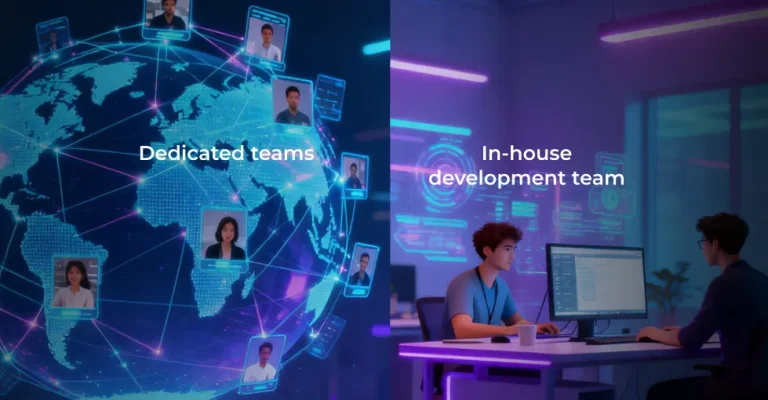As software engineers and industry experts, we often find ourselves in a position to advocate for open-sourcing parts of our companies’ codebases. While the business’s knee-jerk reaction might be hesitation (“Why would we give away our code?”), there are compelling strategic advantages to opening the sources.
In my experience, technical experts often face challenges when trying to communicate these advantages in a manner that’s transparent to business teams. Let’s take a step towards overcoming this barrier and explore the main competitive advantages that businesses can foster by open-sourcing their software.
Building brand recognition through code
Remember when Square was just another payment processing company? Me neither. The first time I heard about them was thanks to OkHttp and Retrofit. These and other open-source projects enabled Square to gain traction with the tech community.
Retrofit became the de facto standard HTTP client library for Android development. Google also adopted Square’s dependency injection framework, Dagger, solidifying the company’s already strong reputation. Today, Square isn’t just a payment processor but a thought leader and evangelist recognized by tens of thousands of software engineers, architects, CTOs, and more.
Message to business: “Open-sourcing strategic components can position our company as an innovator, boosting recognition in business-critical circles. Consider OpenAI’s decision to openly release GPT-1 and GPT-2, which helped the company establish a reputation as a trendsetter, showing confidence to industry experts, investors, and potential partners.”
Leveraging the power of the community
Let’s consider another case involving a renowned brand. Netflix’s open-sourcing of Chaos Monkey brought in global contributions, turning shared technology into a collaborative advantage. Companies worldwide started using, testing, and improving Netflix’s resilience testing tools. Each bug report became free QA; each pull request, free development work; and each adoption, free validation of their architecture.
Message to business: “Open source creates a feedback loop where the community helps improve our product. It’s like having a global team of developers and QA engineers contributing to our success, all while building goodwill with the tech community.”
Elevating code quality through transparency
When engineers know their code will be public, something magical happens. The documentation becomes more thorough, the architecture gets cleaner, and the technical debt is less likely to accumulate. It’s like the difference between cooking at home and cooking in a restaurant with a glass kitchen wall – you naturally hold yourself to a higher standard.
Sure, this may be just an opinion backed by anecdotal evidence, but it’s an opinion that executives and engineers agree on. Besides, open-source code ends up being more secure, according to DevOps.com, and code quality is one of the main factors contributing to strong security.
Message to business: “Public code encourages best practices and higher quality standards. Engineers will often give their best while taking more pride in their work.”
Contributing innovation to the tech ecosystem
Most modern applications leverage open-source software in some capacity, from React to PostgreSQL, from Linux to TensorFlow. By open-sourcing components, tools, and libraries, companies can give back to the ecosystem they benefit from daily.
However, altruism isn’t the only motivation here — consider Red Hat’s business model, which builds on OSS. The company is known for its Linux distribution and Ansible, an IT automation tool used by well over 50K companies worldwide. It goes without saying that Red Hat makes a lot of money on support services and cloud solutions.
Message to business: “Contributing to open source is a way to give back to the ecosystem we’re already using, but it isn’t just altruistic — it’s strategic. By open-sourcing parts of our software, our company can establish new business connections and even create new revenue channels.”
Attracting and retaining talent
When Meta open-sourced their React library, they didn’t just share code – they created a powerful recruitment opportunity. Developers worldwide started learning Meta’s tech stack before even applying, leading to better-prepared candidates and faster onboarding.
Message to business: “Successful open-source projects act as a talent magnet. Developers who use our tools in their personal projects also familiarize themselves with our stack and culture. This translates to more qualified candidates and shorter ramp-up times.”
AgileEngine’s Open-Source Expertise and Strategies
AgileEngine’s experts have ample experience developing open-source projects in areas like React Native, Node.js, and more, and we’ve seen multiple clients benefit from open-sourcing their components. The most successful open-source solutions that we’ve seen follow three strategies:
- Focus on business value. Explore if the solution you’re working on solves a new problem or targets an existing one from a new angle that’s more effective or efficient than other solutions.
- Start small. Begin by open-sourcing non-critical components that showcase your technical excellence without giving away your “secret sauce” or creating strategic advantages for your competitors.
- Measure success. With open source, it’s pretty easy to see if your project is gaining traction with the community. Track how the project is doing and use this data to guide your further decisions and progress.
Conclusion
Open source is more than a technical choice – it’s a business strategy that drives innovation, brand growth, and community engagement. By adopting this strategy, your company can position itself as a thought leader, improve code quality, and attract top talent — all while actively shaping the tech ecosystem.
At AgileEngine, we bring technical expertise and strategic insights to guide you through strategic technical decisions. If you need assistance identifying which components of your code base can yield the most advantage if open-sourced — we’re always happy to help. With a talent pool of top-1% engineering experts across 15+ locations, AgileEngine can also help prepare your code and present it properly in an open repository.













